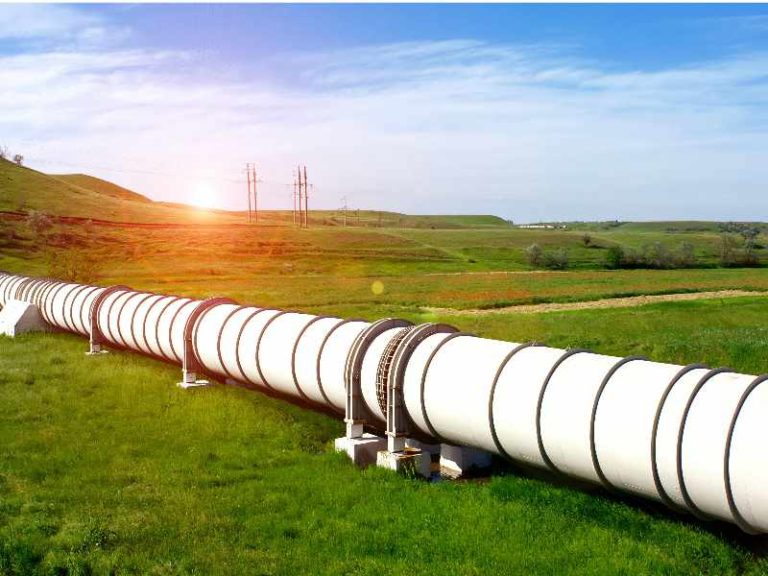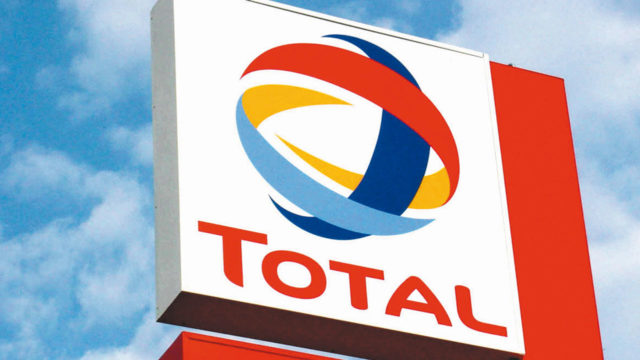The oil price recovery has not yet translated into a rush of cash into challenging offshore environments
The world’s largest listed oil and gas firms are continuing to stress their financial discipline, continuing to shower their more buoyant cashflows onto shareholders through dividends and buy-backs, continuing to boost acreage in the US shale basins and continuing to invest in renewable technologies.
What they are not rushing to do, though, is to make a splurge of investments in offshore deepwater projects, despite a consensus view that the global oil market needs investment in new barrels to avoid a supply shock sometime before the middle of the next decade.
At Gulfquest’s MCE deepwater development (MCEDD) conference in London in April, a panel of respected industry watchers tried to make sense of the dichotomy between a reluctance to invest in the deepwater and the need for the barrels such investments could unlock.
“There is a risk of a lack of investment and what gap that might leave in the supply picture globally in the mid-2020s,” says David Phillips, head of equity research, developed Europe at bank HSBC. “The majors’ cash flow profile is improving, they are generating just under $500bn. Even after dividends, that is $200bn of free cash flow.”
“But capex, while it has seen a 30pc increase from the 2017 trough, is not getting back to previous highs,” cautions Phillips. “So the oil price is okay, cash flow is okay, but do oil companies want to invest in the deepwater?”
Repeating mistakes
One concern is repeating the mistakes of previous cycles, with a flood of cash going into projects as the oil price goes up, but the resultant inflation in the oil field services and equipment (OFSE) sector all but wiping out the benefit of the commodity price gains for operators. However, there is cautious optimism that lessons have been learned.
“We saw how the engineering and the subsea value chain responded to the oil price halving and customers pulling orders left, right, and centre; we saw how early engagement in pre-FEED, FEED and concept selection could have a massive impact in the ability to shake out costs,” says Phillips. “If you walk away from the nice-to-haves, if you walk away from future expandability options that may not be realistic, if you change the phasing of projects, you can achieve some amazing reductions in the costs of projects.”

He cites Equinor’s Johan Castberg project as an example—whereas initially it needed an $80-90/bl oil price to be economic, now its break-even is more like mid-30s. Similarly, the firm’s Johan Sverdrup project now needs a $mid-20s break-even for its phase 1 and 2.
“On Castberg, by shrinking the platform, by changing some of the technology, by earlier engagement with the suppliers, you achieve these incredible reductions that make these projects robust at most oil prices you could think about,” says Phillips.
Beating the cycle
And this leads him to the confidence that most of the cost reductions are structural, with only 20-30pc attributable to cyclical factors like rig rates. And even with these cyclical costs, Phillips sees both reasons to them not to re-inflate and opportunities for structural savings to take an even bigger bite out of costs.
“In the subsea, we see quite a lot of supply out there. Some concerns are starting to appear, when you think about tier 2 and tier 3 suppliers of complex valves and highly engineered steel components, but if you’re a tier 1 installer, compared to 2013 capacity is roughly the same.
There is a risk of a lack of investment and what gap that might leave in the supply picture globally in the mid-2020s — Phillips, HSBC
“As someone once said to me, deepwater vessels never die, they just re-appear somewhere else with a different badge on them. A lot of the big toys that were invested in in the previous cycle are still around, they are just owned by someone else,” says Phillips. “It looks like a fairly well supplied supply chain. There is not a lot of risk of price inflation, at least in the next 1-2 years.”
And there are other innovations around digitalisation, totex, looking at a life-of-field focus, and contract structures that could improve deepwater economics further. “If you look at how the supply chain is changing, there is a move to more integrated structures, the [engineering, procurement, installation and commissioning] Epic model,” says Phillips. “This concept had a lot of resistance and debate two years ago, when it really hit the water, but it is now getting a much wider acceptance. It feels like the contracting side has got its head around some of the risk apportionments, the legal issues, and the sorts of results this type of approach can bring in terms of cost reduction.”
Competitive environment
But while an absolute lowering of costs should encourage investment in deepwater, there remains relative competition—against what Rob West, founder and CEO of oil and gas technology research firm Thunder Said Energy (TSE), calls the “euphoria of dividends and buybacks, where anything you do outside of dividends and buybacks gets you into big trouble”, and against other opportunities, in particular shale and renewables.
“As an operator, how do you weigh up the best in offshore versus the best in shale versus the best elsewhere, it really is a competition for those dollars,” says Phillips. “A lot of free cashflow, at least in the next couple of years, does not mean a lot of additional dollars for exploration, it means the competition perhaps gets even tougher.”
I do not think investors want to invest in deepwater oil and gas —West, TSE
ExxonMobil provides a cautionary example. “It has talked a bit more openly in the last couple of years about wanting to invest more, in particular what sort of supply growth or production platform it wants to be running off as we move into the 2020s and to the mid-2020s,” says Phillips. “When it came out in March 2017 and talked about growing capex a bit, the share price went down. When they came out about growing capex a bit more this year, the share price went down. So, the reaction of the market is still a bit glass-half-empty in terms of any company talking about expanding a lot.”
Lower costs not enough
“I do not think investors want to invest in deepwater oil and gas” is the blunt view of TSE’s West. He puts this down to a number of factors, including the fear of cost re-inflation. According to his modelling, a 2014 average project capex cost was $65,000/flowing bl, which by 2017 had been cut to $35,000/flowing bl. Depending on where particular projects sat on the cost curve, that represented a 25-50pc reduction in costs.
“Was that enough to re-excite investment in offshore oil and gas?” asks West. “Not quite. And the reason why not quite? The first reason is that we have seen these costs go down when the oil price went down, but what if they go back up when the oil price goes back up? There is this fear that the costs just move with the oil price. So, yes, we might have got that project to break-even at $30/bl, but will it stay at $30/bl if oil prices go back up?”
A second factor identified by West is an increased investment hurdle for longer-term projects, based in part of what he sees a misplaced fear that the energy transition could limit the economic life of such investments.
This desire for earlier returns is particularly important in terms of deepwater’s competition for investment with shale. “The cheapest oil to finance is shale, because it is short cycle, it pays back really quickly. Within ten years, you have three times return on your cash investment. For an offshore project, in ten years, you have not even recouped your costs,” says West.
Deepwater projects can compete with shale on a net present value basis (NPV), but it is on internal rate of return (IIR), which measures how quickly you cycle your cashflow, that shale wins out. “As investors care about both metrics, IIRs and NPVs, we have seen certain firms start to do well on highlighting progress on reduced time between sanction and first oil,” says West.
Shale is not the panacea of cheap oil that everyone thought it was going to be — West, Evercore
“Throughout the 2000s and the 2010s, the development times went up. Because of this feeling that we need to get these projects to pay out sooner, we need to get the IIRs up. You see companies try to pursue shorter cycle times. There is some encouraging evidence, particularly from Eni, of developing stuff simpler and faster,” he continues.
Shale stresses
West is a shale enthusiast—he predicts that the Permian will be able to produce 20mn bl/d and shale overall 30mn bl/d at the bottom of the cost curve. But not everyone is convinced.
“We have exposed shale as a fraud. I will say it again, it is fraud,” says James West, senior managing director at financial services firm Evercore ISI. “Shale is not the panacea of cheap oil that everyone thought it was going to be. Deepwater is coming back in a big way,” says Evercore’s West.
“ExxonMobil and Chevron talking about massive growth in the Permian probably tells you that the party in the Permian is over, because the majors are typically late to the show every single time,” he continues.
“I have spent the last five years talking about 13 counties in Texas, Oklahoma and New Mexico. That is a ridiculous conversation for me to have. Oil is big, it is global, it comes from everywhere around the world, not just Texas and not just the Permian Basin. Where are we going to drill? The Gulf of Mexico, the Mexican portion of the Gulf, Brazil, west Africa, Southeast Asia, back to the Arctic over time. The return to the deepwater is real, it is significant and it is coming,” he concludes.
Where both Wests see a challenge, though, for deepwater in its competition against shale is in fiscal terms. “Modelling it, it is often the fiscal terms that really hold many deepwater projects back,” says TSE’s West. “The capex/bl and opex/bl are fine and competitive. But these are capital intensive projects, how are we going to attract that capital? In the model, the average project is assigned a fiscal regime of about a 65pc take. To compare, what do shale projects pay in tax? They pay a royalty and then weasel out of any income tax they think they can, they are paying 20pc. How do you compete at 70pc, or even 80pc+ if you are some of the more closed-minded places? You cannot. I think this is something that really needs to change.”
PE firms are trapped at this point and are having massive problems getting out of their shale investments —West, Evercore
Evercore’s West agrees. “To encourage investment, I think you will see changes in Angola, in Nigeria, we have already seen changes in Brazil,” he says. “It is adjusting, but not nearly fast enough. I think 20pc received by the US exchequer from shale is generous, I think it is less than that—if they are paying taxes at all—which does make it very cost-effective.”
But new private equity (PE) cash, which has been a major driver of shale investment, may start to look for alternatives, which could include deepwater, as might PE money coming out of US shale, if it can find an exit.
“PE firms are trapped at this point and are having massive problems getting out of their shale investments, both on the OFSE side and the E&P side,” says Evercore’s West. While IPOs and M&A remain options, neither are at levels attractive to the would-be sellers, with prices often below the money they have put in. West’s advice to them is “graduate it to your next fund and hope for a higher oil price and for greater fools to emerge”. “If those fools emerge, great, if they do not, you are done. PE appetite for energy has massively declined,” he says.
“There is this old PE model where you go and buy some moose pasture, you drill some wells, you prove it up and suddenly it is the promised land where you can sell it to a major,” says TSE’s West. “These majors now have more data than you can shake a stick at, they cannot find enough capital to throw into the big positions they already have. So, if you are left having to develop it, what is your technology edge?” he asks.
“Some companies have walked themselves into a corner. The shale party is over for the model of PE firms buying acreage and trying to flip it, even though the party is nowhere near over for production,” says TSE’s West.
Rush to renewables
Deepwater’s other emerging competitor for oil firms’ capital is renewables, which is an increasing focus despite the lower headline rates of return that these investments appear to offer. Not everyone is convinced that renewables are attracting cash for the right reasons. “The renewable investments being made by the majors are for ESG purposes, lip service, primarily, to investors. Ask Darren Woods at ExxonMobil what he thinks about his renewables business and he probably cannot tell you,” says Evercore’s West.
HSBC’s Phillips agrees that, to some extent, optics is at play. “On the returns, if you are looking at this purely mathematically, renewables and power in general is a capped return game, whereas in oil, your economic hurdle might be $30 or $40/bl, but fingers crossed the oil price might go up and you might make more money. That type of upside is not really there, so it is a different discussion,” he says.
“The ESG push is a very powerful one, especially for those companies that have more of a European investor base than a US one. Apart from an investment case, you have to bear in mind what investor is going to be allowed to own a company, given what they do.
“And there is also the issue of what does a company want to be in 10 years’ time. If you want to be a power supplier, and your source of energy is dirty hydrocarbons rather than renewables, that is actually a very important distinction if you are thinking about having more of a b-2-c model, where you are selling power to consumers,” says Phillips. “We have already seen it in the UK, there are companies who market themselves as having 20pc of their power coming from renewables, that is extremely powerful branding. There is the sense of a demographic, whether it is amongst investors or power consumers or just the general consumer, that wants to have those ESG standards on what they buy.”
There is definitely a place for renewables within the energy mix, in the view of TSE’s West. “The best solar cells today are maybe 16pc energy efficient, you might be able to get up to 30-40pc. Are they as energy dense as fossil fuels? Nowhere near. But there is still going to be some contexts where they are really effective,” he says.
“If there is going to be an energy transition, you look at the costs/kWh, 5¢/kWh, this is the lowest cost new source of energy in the world. But I cannot in my model physically get it to more than 30-40pc of the energy mix by 2070,” says West. “No sensible person can, unless you are going to assume that the global population halves or the world decides that it would rather not use any more energy or there is a billion people with zero access to any electricity or fuel and you just leave them there and do not give them access.”
Future need
And this leads all three analysts to the same conclusion—that there is still a pressing need for conventional oil and gas, and that deepwater will play a prominent role as a supplier of these hydrocarbons. “The outlook is improving, becoming more positive for the offshore, because the industry has realised we need offshore,” says Evercore’s West.
“The efforts the industry has done so far, reducing costs, changing business models, are really impressive. It means deepwater, in our view, is on a very good footing to compete for investment dollars in the next few years,” agrees HSBC’s Phillips. “I think investors are not correct that the rise of wind, solar and other renewables derails the need to invest in offshore oil and gas. That just means that we are going to have a cycle,” predicts TSE’s West.
Source: Petroleum Economist






